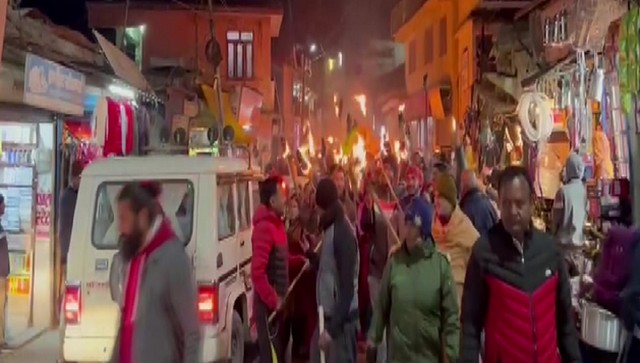Uttarakhand’s Joshimath town is ‘sinking’. Citizens are in an uproar, cracks have appeared in homes, families have been evacuated, hotels shuttered and the ropeway service halted. Let’s take a closer look: What happened? Located at a height of 6,000 feet in Uttarakhand’s Chamoli district, the town on the route to Badrinath and Hemkund Sahib falls in high-risk seismic ‘Zone-V’. The Jyotirmath Hindu monastery, one of the most important important sites in Hinduism, is here, as per NDTV. It also has nearby one of the closest military stations to the border with China. As per The Times of India, though the town of Joshimath has been witnessing cracks emerging for the past two decades, things have escalated over the past few days. Cracks have appeared in homes, roads and even agricultural fields. As per NDTV, the cracks have spread across all nine wards. Former municipal chief Madhavi Sati is among those affected. “I have no other option but to live in a ruined house,” she told NDTV. According to a survey by the Joshimath municipality over 550 homes in Joshimath have developed cracks over the past year. [caption id=“attachment_11936932” align=“alignnone” width=“640”] Cracks have begun appearing in roads and in homes. @NegiDeekshaa[/caption] So far, 561 houses in various areas of the town have developed cracks, including 153 in Ravigram, 127 in Gandhinagar, 71 in Manoharbagh, 52 in Singhdhar, 50 in Parsari, 29 in Upper Bazar, 27 in Suneel, 28 in Marwadi and 24 in Lower Bazar, District Disaster Management Officer N.K Joshi said. As per News18, cracks appearing in homes made national headlines in 2021 after the Chamoli landslide. Residents then began using wooden poles to prop up their homes. On 22 December, part of the Helang-Joshimath highway caved in entirely, as per The Times of India. Then, on Monday, residents were alarmed after hearing sounds coming from the ground. Then, an aquifer burst in Marwari – which brought back memories of when water poured into Joshimath after aquifer burst in 2010. Why is this happening? An expert panel set up by the Uttarakhand government in 2021 found that several pockets of Joshimath are “sinking” due to man-made and natural factors, N_ews18_ reported. The panel found that ground subsidence — a gradual settling or sudden sinking of the earth’s surface due to removal or displacement of subsurface materials — has induced structural defects and damage observed in almost all wards of Joshimath.
The region has witnessed several large-scale landslides due to excessive construction, as per News18.
CSIR chief scientist DP Kanungo said 128 landslides were recorded in the Chamoli-Joshimath region between 2009 and 2012. The Times of India quoted the Mishra Committee report of 1976 as saying that “Joshimath lies on an ancient landslide” and that heavy construction work ought to be barred. Ravi Chopra, former chair of the High Power Committee (HPC) on the all-weather Char Dham Road project, blamed tunnelling and slope cutting. “The precautions advocated by the Mishra committee since 1976 have not been respected. In addition to the rapid growth of the city, we have imposed additional burdens by digging a tunnel that has perforated a large aquifer," he told News18. Citizens blame NTPC, accuse state of neglect Citizens have blamed NTPC projects and accused the government of ‘turning a blind eye’ to their pleas for rehabilitation. Atul Sati, convener of Joshimath Bachao Sangharsh Samiti, told The Times of India that the NTPC in 2020 admitted “the tunnel was witnessing water seepage from a punctured aquifer, leading to the drying of water sources in Joshimath”. [caption id=“attachment_11936952” align=“alignnone” width=“640”] ‘Google Earth’ image of Joshimath. News18[/caption] Environmentalist Ravi Chopra told the newspaper the punctured aquifer inside the Joshimath mountain area would act like a leaking balloon. “Just as water will leak out of the balloon, causing it to gradually collapse, a similar phenomenon may have occurred inside the mountains in the area. ” But NPTC officials rebuffed such claims, saying the tunnel was dry and that Joshimath was not ‘sinking’ due to the project, as per The Times of India.
Citizens remain unconvinced.
Sati said residents on Thursday observed a bandh to protest against administrative indifference to the plight of residents and the “NTPC projects which have led to its gradual sinking.” People descended on the streets shouting slogans against an “idle administration” and staged a chakka jam while the business establishments remained closed, he said. Citizens are demanding immediate rehabilitation of residents, halting construction of an NTPC tunnel and a bypass road between Helang and Marwadi for Badrinath and affixing responsibility of this disaster on the NTPC’s Tapovan-Vishnugad hydel project, Sati added. Joshi said the degree of damage to the houses differ and till now 29 families from the most affected houses have been shifted temporarily to safer places from the town. He added that more families could be evacuated if required. The locations where they have been shifted to include the Nagar Palika Bhawan, a primary school building, the Milan Kendra and the Joshimath Gurudwara, the official said. Some of the families have also been shifted for the time being to the places of their relatives, Joshi said. Chief Minister Pushkar Singh Dhami said the situation in Joshimath is being closely monitored and he will visit the place to assess the situation. Meanwhile, a delegation from Joshimath may travel to Dehradun to meet Dhami, NDTV reported. Experts, including from IIT Roorkee will prepare a report that will be sent to Dhami. Officials said a team of experts has also been set up to conduct a survey of the place that falls in the high risk seismic ‘Zone-V’. With inputs from agencies Read all the Latest News , Trending News , Cricket News , Bollywood News , India News and Entertainment News here. Follow us on Facebook, Twitter and Instagram.


)

)
)
)
)
)
)
)
)



